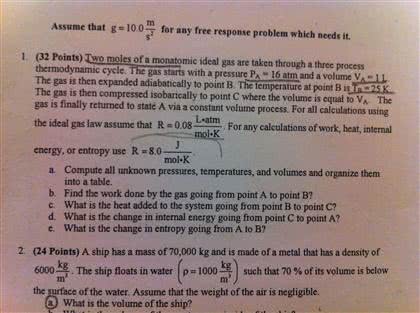PHYS 1050 Lecture 16: 3-22-17
Document Summary
The first law of thermodynamics is another expression of the conservation of energy. The law states that no matter what process the system undergoes, the change in heat, change in energy, and the work input or output by the system can be related by. A system does 1000j of work on the environment and only 400j of heat were absorbed by the system. A hot air balloon expands when going to a higher altitude. As it expands adiabatically, it does 1000j of work on the surrounding air. Version #1: thermal energy never spontaneously flows from a cold object to a hot object. Version #2: no machine can be 100% efficient in converting heat to work (the law) Heat engine: any device that changes internal energy into mechanical energy. If th= 500k and tc= 300k, eth = 500k-300k / 500k. Version #3: in natural processes, high-quality energy tends to transform into low-quality energy.


